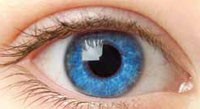You Can Run, but You Cant Hide Those Baby Blues

By Sara Nedley
Little more than 25 years ago, the use of DNA to help identify humans was not well understood. But since its introduction into forensic casework in the mid-1980s, DNA has proven to be an increasingly important tool for forensic scientists. Very few items of evidence hold the value of a DNA profile, which allows investigators to identify suspects by virtually eliminating the possibility that the DNA sample came from anyone else included in the world's population.
New Screen Demonstrates Accuracy
In many instances, police are equipped with a DNA sample from a crime scene that cannot be matched in databases. As powerful as an entire DNA profile has proven to be, there is other information that can be ascertained from an individual's genetic sample. IrisPlex, a new genetic screen, uses DNA to determine whether a suspect has blue or brown eyes with up to 94 percent accuracy. The screen searches for single-letter differences in the genetic code known as SNPs (single nucleotide polymorphisms). The kit searches for six SNPs strongly linked to eye color, labeling them as blue, brown or undefined (undefined is likened to a color such as green or gray).
Rapidly Expanding Potential
Current research is based on DNA from more than 6,000 Dutch Europeans from Rotterdam. The Dutch Ministry of Security and Justice is expected to approve the use of IrisPlex for forensic investigations, while the UK could use it immediately, making IrisPlex the first kit of its kind to be approved for forensic casework. Promising steps are also being made in predicting hair color, with one study showing 13 markers helped to predict red and black hair with about 90 percent accuracy, and blond and brown at about 80 percent.
Though IrisPlex is still not accurate enough to secure a court conviction, it can be used to provide law enforcement with helpful clues for narrowing suspect searches. Further work would be needed before the test could be used in other countries. When considering the advances forensic science has already made in the use of DNA, it seems as though future potential is only limited by what our minds can conjure.
Classroom Discussion
- What other physical identifiers could help build a suspect profile?
- DNA profiles are created using STRs. What is the different between an STR and an SNP?

